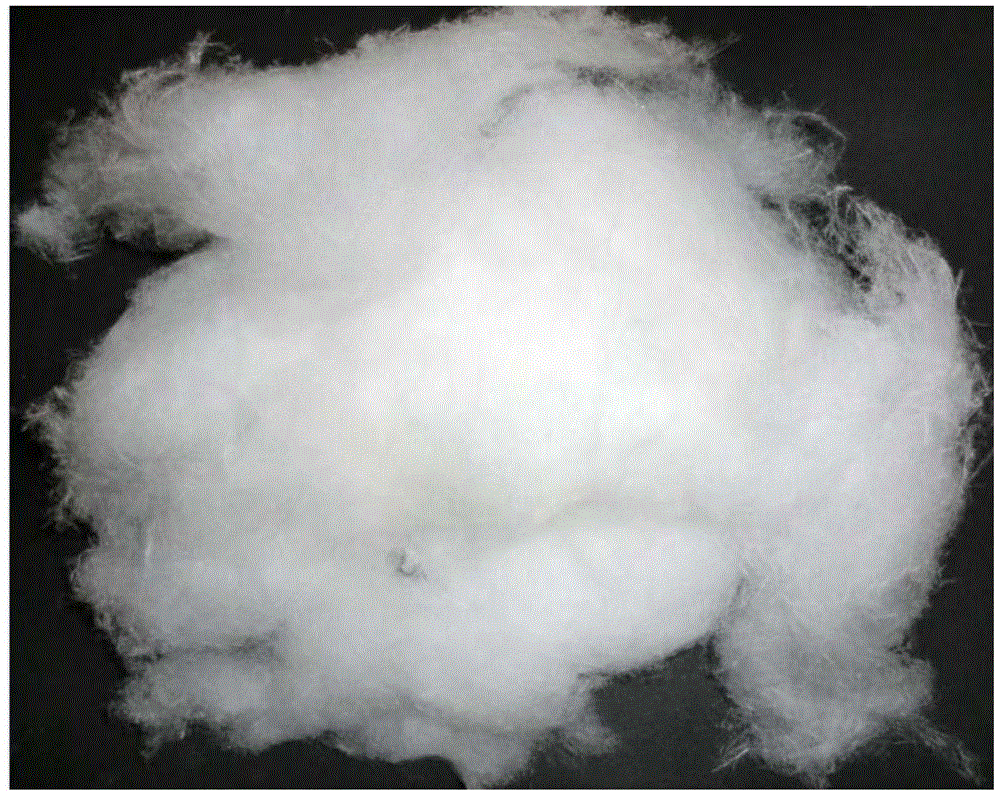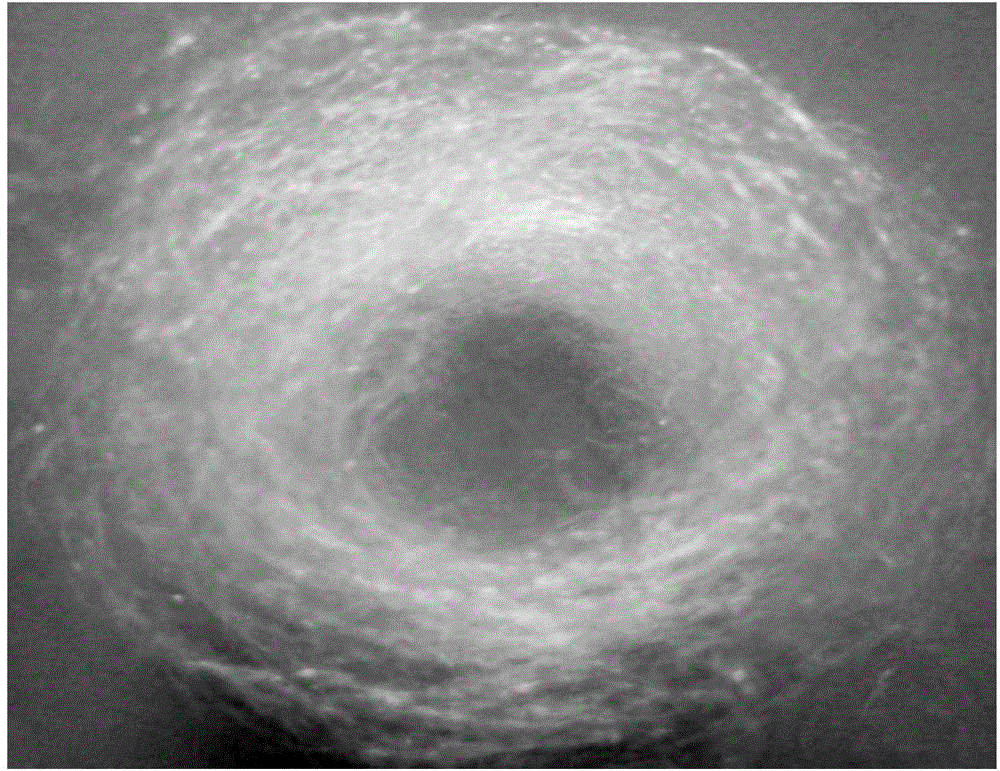Preparation method of tin oxide fiber precursor and tin oxide crystal fibers
A precursor fiber and crystal fiber technology, applied in the direction of tin oxide, inorganic raw material artificial filament, etc., can solve the problems of poor fiber strength, easy pulverization, loose and porous, etc., and achieve high mass production efficiency, soft luster, and uniform diameter Effect
- Summary
- Abstract
- Description
- Claims
- Application Information
AI Technical Summary
Problems solved by technology
Method used
Image
Examples
Embodiment 1
[0053] (1) Synthesis of tin oxide fiber precursor
[0054] Weigh 100.0 g of anhydrous tin tetrachloride, dissolve it in 400 ml of methanol, stir until fully dissolved, and mark the resulting solution as liquid A. Weigh 96.0g of sodium acetate, dissolve it in 450ml of methanol, add 10g of deionized water, stir until fully dissolved, and mark the resulting solution as B solution. Add solution A dropwise to solution B at 30°C The time is 30min. Stir continuously during the dropwise addition and continue to stir for 1h after the dropwise addition. After stopping the stirring, let the reaction solution stand at room temperature for 12h, filter, the precipitate is sodium chloride, and the filtrate is the tin oxide fiber precursor solution .
[0055] (2) Concentration of fiber spinning solution
[0056] The tin oxide fiber precursor solution was distilled under reduced pressure at 38°C, concentrated to obtain a uniform light yellow spinning solution with a viscosity of 40 Pa·S, and...
Embodiment 2
[0063] As described in Example 1, the difference is that the methanol solvent in step (1) was replaced with absolute ethanol. That is, weigh 100.0 g of anhydrous tin tetrachloride, dissolve it in 300 ml of absolute ethanol, add 7.0 g of water, stir until fully dissolved, and mark the resulting solution as liquid A. Weigh 110.0g of sodium acetate and dissolve it in 350ml of absolute ethanol. The resulting solution is marked as solution B. Add solution B dropwise to solution A at a temperature of 70°C for 40 minutes. Stir continuously during the dropwise addition. And continue to stir for 1 h after the dropwise addition, stop the stirring and let the reaction solution stand at room temperature for 12 h. Adjust the viscosity of the spinning solution in step (2) to 25Pa·S, and adjust the standing time to 2h. In step (3), the motor speed is 16000r / min, the temperature in the spinning room is 28°C, and the relative humidity is adjusted to 40%. Set the heating rate under the water ...
Embodiment 3
[0066] As described in Example 1, the difference is that the methanol solvent in step (1) is replaced by n-propanol. Dissolve 100g of anhydrous tin tetrachloride in 600ml of propanol, dissolve 110.0g of sodium acetate in 750ml of propanol, weigh 100.0g of anhydrous tin tetrachloride, dissolve it in 600ml of propanol, and add 7.8g water, stirred until fully dissolved, and the resulting solution was marked as liquid A. Weigh 110.0g of sodium acetate, dissolve it in 750ml of propanol, and stir until fully dissolved. The resulting solution is marked as B solution. At 30°C, drop solution B and solution A into the container at the same time, and the dropping time is 30min. , Stir continuously during the dropwise addition and continue to stir for 1h after the dropwise addition, stop stirring and let the reaction solution stand at room temperature for 11h.
PUM
| Property | Measurement | Unit |
|---|---|---|
| diameter | aaaaa | aaaaa |
| length | aaaaa | aaaaa |
| tensile strength | aaaaa | aaaaa |
Abstract
Description
Claims
Application Information
 Login to View More
Login to View More - R&D
- Intellectual Property
- Life Sciences
- Materials
- Tech Scout
- Unparalleled Data Quality
- Higher Quality Content
- 60% Fewer Hallucinations
Browse by: Latest US Patents, China's latest patents, Technical Efficacy Thesaurus, Application Domain, Technology Topic, Popular Technical Reports.
© 2025 PatSnap. All rights reserved.Legal|Privacy policy|Modern Slavery Act Transparency Statement|Sitemap|About US| Contact US: help@patsnap.com



